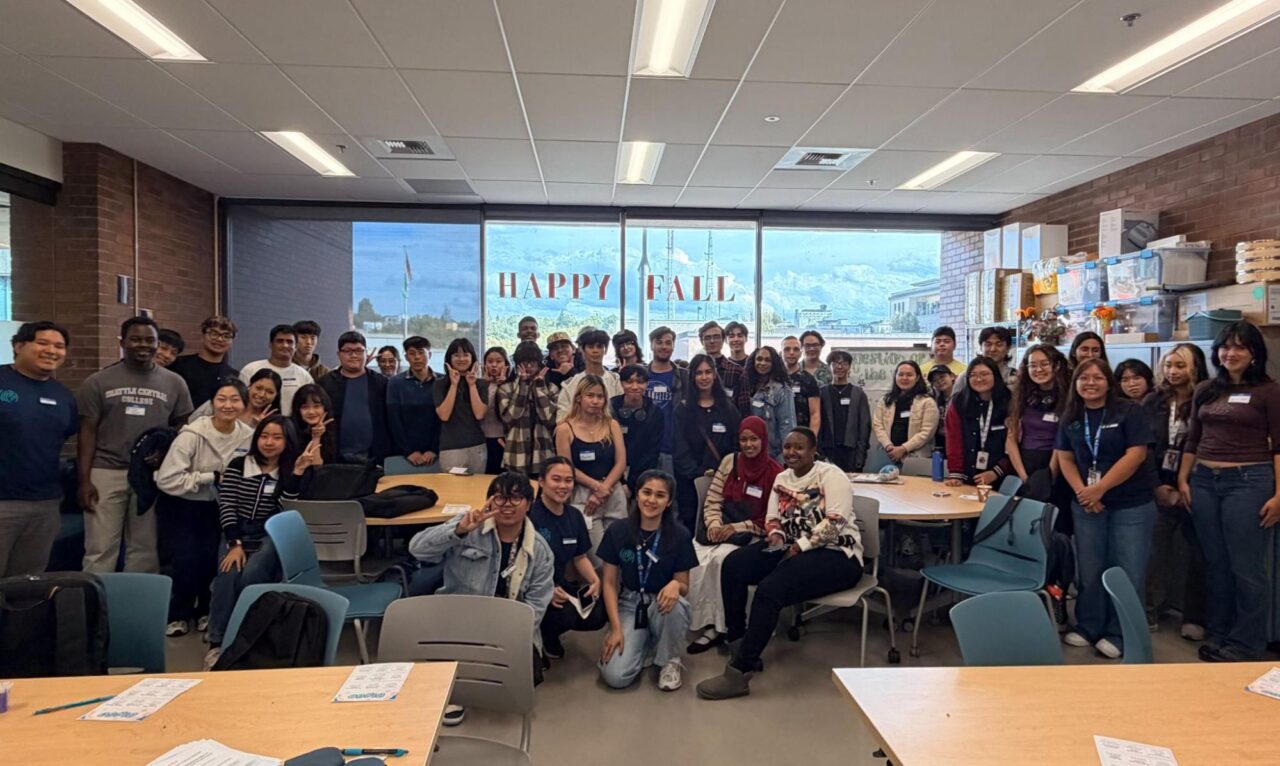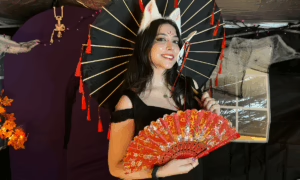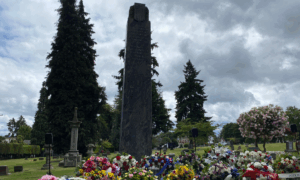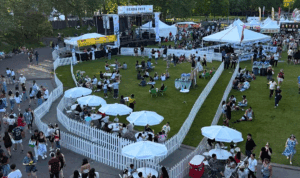Seattle Central College’s Asian American and Native American Pacific Islander-Serving Institution (AANAPISI) Center welcomed students back on Oct. 2 with its annual Fall Welcome Social, an afternoon focused on culture, connection, and community.
“The goal is to introduce students to our program and the services we provide,” said Jeff Bermudes, AANAPISI director since 2022. “Even after the event ended, students stayed to hang out and have fun, which shows how much they enjoy the space.”
A growing community
The AANAPISI program offers peer mentoring, individualized advising, and a welcoming environment for all Central students, not just those of Asian or Pacific Islander heritage.
What began as a small initiative has become one of the college’s most active student hubs. The center saw about 650 student visits in its first year; last year, that number grew to nearly 2,100. Surveys show participants report a strong sense of belonging–a key factor in student success and retention.
“Our goal is to keep this space as welcoming as possible,” Bermudes said. “College is more than earning a degree; it’s about building friendships and discovering who you are.”
Mentorship and belonging
For many students, the AANAPISI Center quickly becomes a home on campus.
Ninjin Bat-Och, an international student from Mongolia, joined as a mentee last fall.
“We’re assigned mentors who help with academics, visas, and other questions,” Bat-Och said. “I used to be very introverted, but this community helped me open up. I’ve made new friends and learned about different cultures. Everyone here is so kind.”
Bat-Och described the center as “a big social gathering area” where friendships and confidence grow together.
Creating a safe space
Skyler Hofschneider, a second-year student and peer mentor, helps new students navigate their first year.
“Being a first-year can be scary, especially if you’re moving from somewhere else,” Hofschneider said. “We try to create an environment where students can grow and feel supported.”
The center also serves as a safe space during politically and socially tense times.
“We want students to feel comfortable being themselves,” Hofschneider said. “And we encourage them to explore opportunities that align with their goals.”
Hofschneider added that AANAPISI helps celebrate the diversity within Asian and Pacific Islander cultures.
“The media doesn’t always show how rich and varied our cultures are,” Hofschneider said. “Here, students learn from one another in meaningful ways.”
Supporting students holistically
Hanh Pham, AANAPISI’s student specialist, focuses on both academic and personal support.
“My goal is holistic support—to check in with students not just academically but personally, too,” Pham said. “We help them build educational plans and connect them to resources. Each student has a unique story. We want to help them define what success means for them.”
Pham said she’s witnessed the program’s impact firsthand.
“One student told me they spent their first year feeling quiet and disconnected,” Pham said. “After finding AANAPISI, they said, ‘I finally found my place here.’ Moments like that remind me why this work matters.”
A lasting impact
The sense of community extends beyond graduation.
Nasrina Abdulkadir, a Central alum now studying at Seattle University, returned for the event to reconnect with the community that helped shape her college experience.
“The people here are very welcoming and open,” Abdulkadir said. “If you need someone to talk to—or just someone to hang out with—you can come here.”
As students lingered after the event, chatting and laughing, the AANAPISI Center showed why it is one of Central’s most welcoming spaces.
The AANAPISI Center, located in the Broadway Edison Building (BE 3104), is open Monday through Thursday from 10 a.m. to 4 p.m.

Danika is an aspiring journalist based in Seattle. Born and raised in Jakarta, she has long been drawn to the gravity of stories—the way they hold what might otherwise slip through the day. As editor-in-chief, she approaches her work with curiosity more than certainty, trusting small details to reveal larger truths. For her, storytelling is less about control than attention: a practice of listening closely and noticing what remains after the noise.







Be First to Comment